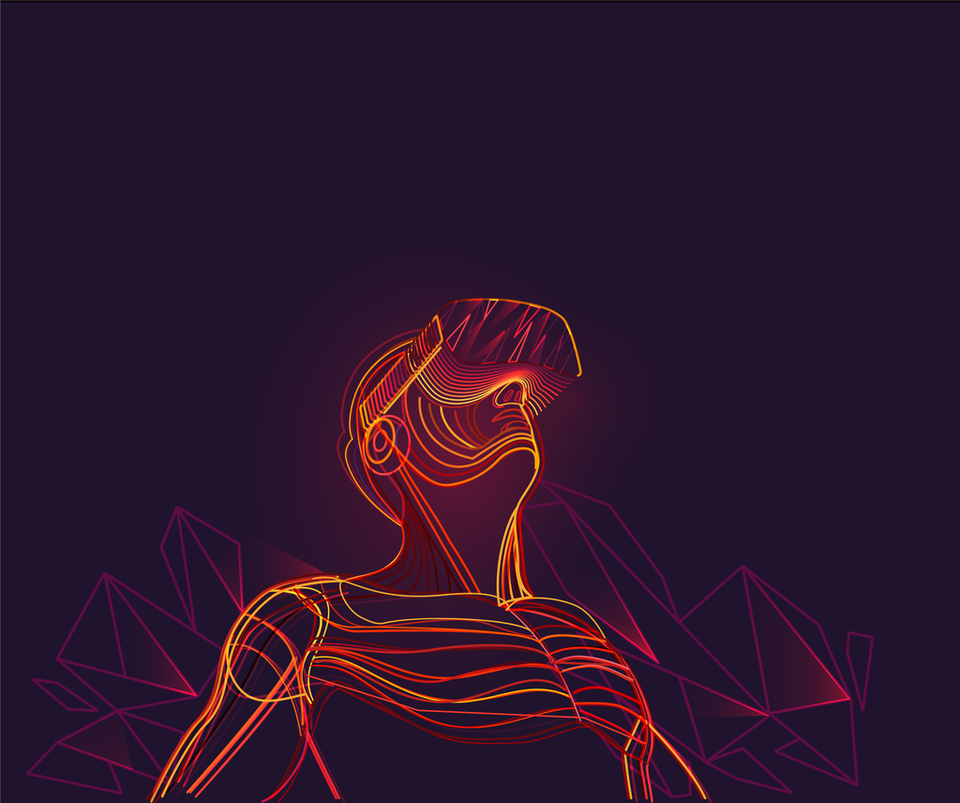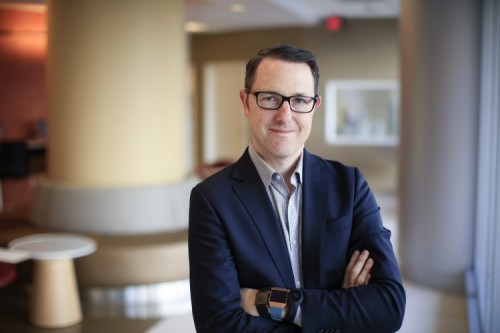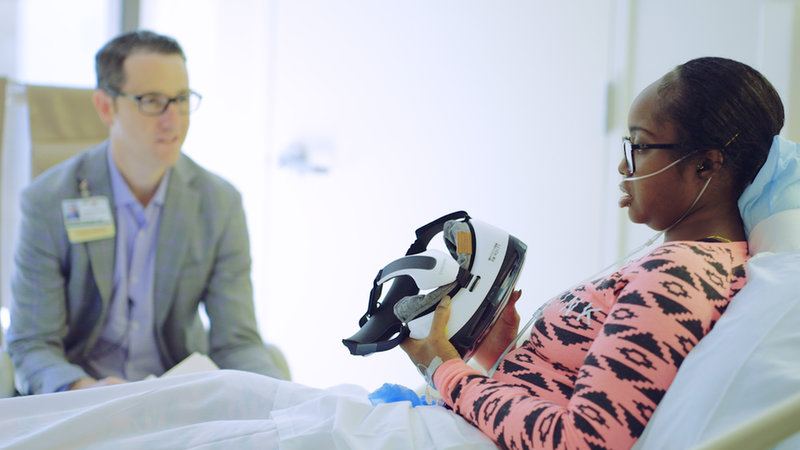Q&A: VR
The game-changing potential of digital therapeutics with Dr Brennan Spiegel
No longer just a gaming technology, virtual reality is starting to make inroads in healthcare settings. Abi Millar speaks to author Dr Brennan Spiegel about how virtual therapeutics may help people manage their conditions more effectively than traditional drug-based approaches.

D
igital healthcare is booming. According to a study by Juniper Research, the number of people using digital therapeutics and wellness apps will surge from 627 million in 2020 to more than 1.4 billion in 2025. One important piece of the puzzle is virtual reality, which is already being used across everything from pain management to stroke rehabilitation.
Dr Brennan Spiegel, a gastroenterologist and director of Cedars-Sinai’s Health Services Research, helps oversee the largest medical virtual reality programme in the world. He has also written a book, VRx: How virtual therapeutics will revolutionize medicine, which explains the role virtual reality (VR) is starting to play in healthcare settings.
Below, he explains why VR-based therapies are here to stay and why the pandemic has catalysed a trend that was already well underway.

Dr Brennan Spiegel
Abi Millar
You’re a gastroenterologist by profession. How did you become so interested in virtual therapeutics?
Dr Brennan Spiegel
So I’m not really a technologist, not a gamer, not somebody who knew anything about virtual reality. That was until about five or six years ago, when I was introduced to virtual reality and experienced jumping off a building. My brain was hijacked, and I felt as if I really were leaping off the building.
I thought, wow, if this can be used for evil maybe it could also be used for good. Maybe we can use it to nudge people in positive directions. That was the beginning of a five or six-year journey, which now includes over 3,000 people we've treated in our medical centre with VR, for a wide variety of conditions.
Your book, VRx: How virtual therapeutics will revolutionize medicine, makes the case that virtual reality is already making inroads in medicine. What are some of the main themes of the book you’d like to highlight?
The book is about virtual reality. But it's really about what does VR teach us about our own consciousness? What does it teach us about the way the mind and the body are connected, and the nature of healing? So the book explores the frontier between neuroscience, technology, philosophy, psychology and clinical medicine, and I use VR as the lens to bring together those disciplines.
I also talk about the clinical applications of using this technology for everything from pain to anxiety and depression and schizophrenia, to eating disorders, high blood pressure, stroke rehabilitation and so on, making the point that, as doctors, we can do better than prescribing pills.
These age-old theories of mind-body medicine, which have been around for thousands of years, are now becoming much more accessible with the advent of immersive therapeutics.
Can you talk me through some virtual reality applications that are already being used in healthcare settings?
One of the most common uses is for pain, both acute pain and chronic pain. We use it in hospital for people who are recovering from surgery or suffering from a broken bone, or going through a spinal tap. It's been used in people with burn injuries going through bandage changes, and people having their teeth drilled. We also use it during childbirth, to help women avoid an epidural, and we have recently published a randomised trial of that use.
These are examples of acute pain, but we’re also using it for chronic pain. Right now we have a grant supported by the National Institutes of Health to study VR for chronic lower back pain. We use it to teach people cognitive behavioural therapy (CBT) at home, so it's not just about smoke and mirrors and distraction. It also can be used to train people to become more effective at managing their body – in this case, managing their pain through CBT breathing techniques.
For example, we have one programme where you can breathe in and out and the microphone detects your breathing, and then you breathe life into a dying tree in a forest. The forest responds to your breathing. And then there's this biofeedback loop that allows the user to recognise how their body can control the environment. It's a metaphor for controlling their own body.
Your team at Cedars-Sinai Medical Center have developed the world’s largest medical virtual reality programme. What has this involved?
We started as a research operation but now we're moving into a larger clinical service. We have done a number of research trials, including one on VR in childbirth, as well as postoperative pain, and we've been offering virtual reality to our patients, both in the hospital and as outpatients.
During Covid-19, people haven't had the same access to medical care for routine conditions, so what we've been doing is shipping headsets to people's homes so they can undergo mental health treatments like CBT with the VR headset. Each day, they do a treatment in the headset. And there's no real substitute for a human mental health practitioner but this is a pretty good second place.
We now call ourselves the ‘virtualists’ – that’s the name we made up for the clinician who uses VR. Soon we’ll be initiating a full clinic that's available outside of research to help support people with a number of conditions.

Image Credit: Cedars-Sinai
Is therapeutic VR also being used in a consumer setting and do you expect this market to take off?
More and more for sure. Along those lines, we created a website to help consumers and patients learn about different software that's available to them. On that page, we have a list of all of our favourite software programmes. Some of them require a prescription, but others are available to consumers.
Now, a lot of the great programs unfortunately are not yet available for consumers. You have to go directly to the companies and they’ll send you a headset with their programme preloaded onto it. To me that’s not very efficient. It would be a lot better if you could use your own headset and the Oculus App Store, which is the largest App Store for VR right now.
How do you think Covid-19 has affected our collective appetite for virtual healthcare, or other forms of digital therapeutics, and do you think these changes are here to stay?
There’s no question that Covid-19 has affected every one of us in different ways. We’re now recognising that there’s a mental health pandemic on the heels of the main pandemic – we're seeing just tremendous amounts of depression, anxiety, phobias etc. It turns out VR is very good for those.
As I mentioned before, what's nice about VR is it can be used at home – you don't necessarily need to come into a physical environment, and sit across from a human. Obviously I could send somebody a workbook or brochure, and they could use it at home, but that's not going to engage them in the same way as virtual reality does.
That's been a very big part of the pandemic. And it’s likely to stay that way, because people are recognising the benefits of remote care. Part of what I do separately is digital health, with wearable biosensors and smartphone applications. I also teach graduate students about digital health and remote patient monitoring.
This is now attracting close attention, because we’ve realised that we have to extend care beyond the four walls of the hospital. We have to engage people where they actually are, where they live and where they work, where they play. So we've always needed to find ways to engage people this way, and Covid-19 has just accelerated that.
Where do you think virtual therapeutics will take us in future? What are some of the future applications you’ll be most excited to see?
There are so many different applications that are fascinating. Stroke rehabilitation is an important one. You can use virtual reality to undergo a form of what's called mirror therapy, where you can learn how to start moving your paralysed limb by giving yourself control of that limb again.
Initially, you only have control over that limb in virtual reality, but then the brain starts to think it really does have control over that limb. When you literally believe that you're moving your arm, the brain starts to believe it too, and, crudely speaking, rewires itself faster. So that's one example I'm very excited about.
And there are so many others, but I think pain management is really the place to start. Already we have so much evidence about how that works. Pain is an epidemic, and opioid use is an epidemic. So that's a very important opportunity for VR, to help reduce opioid overuse for pain management.
What kinds of attitudes to virtual reality are you seeing among patients and other physicians?
Physicians have been very open to this. Sometimes people ask me, how are your colleagues responding, do they think you're selling snake oil or something? And when they actually see it with their own patients, and read the literature, they realise, oh, there really is something here.
VR is also starting to open up conversations between patients and their doctors about the communication between brain and body, about the nature of consciousness – deep, existential, philosophical questions.
It's easy enough just to give the patient a pill or to say, I don't know so much about psychology, so I'm going to send you to a therapist. But if VR is available, then all of a sudden these same doctors are in a way becoming surrogate psychologists by offering this very powerful treatment.
Physicians have been very open to this. Sometimes people ask me, how are your colleagues responding, do they think you're selling snake oil or something? And when they actually see it with their own patients, and read the literature, they realise, oh, there really is something here.
VR is also starting to open up conversations between patients and their doctors about the communication between brain and body, about the nature of consciousness – deep, existential, philosophical questions.
It's easy enough just to give the patient a pill or to say, I don't know so much about psychology, so I'm going to send you to a therapist. But if VR is available, then all of a sudden these same doctors are in a way becoming surrogate psychologists by offering this very powerful treatment.